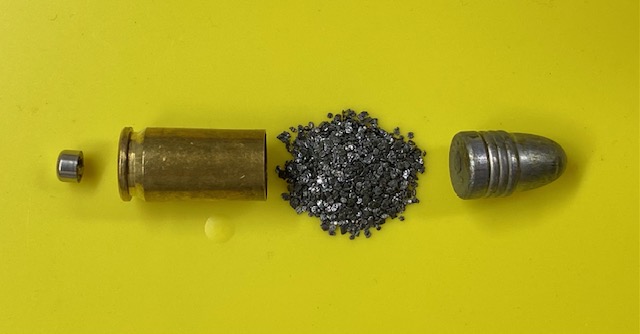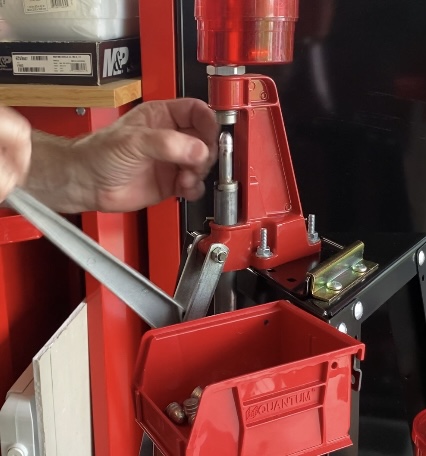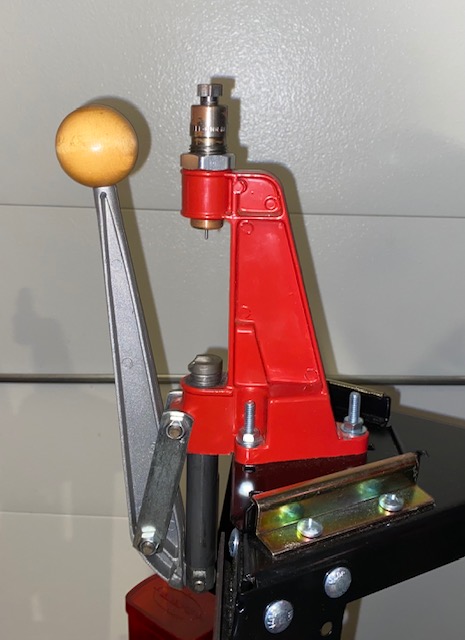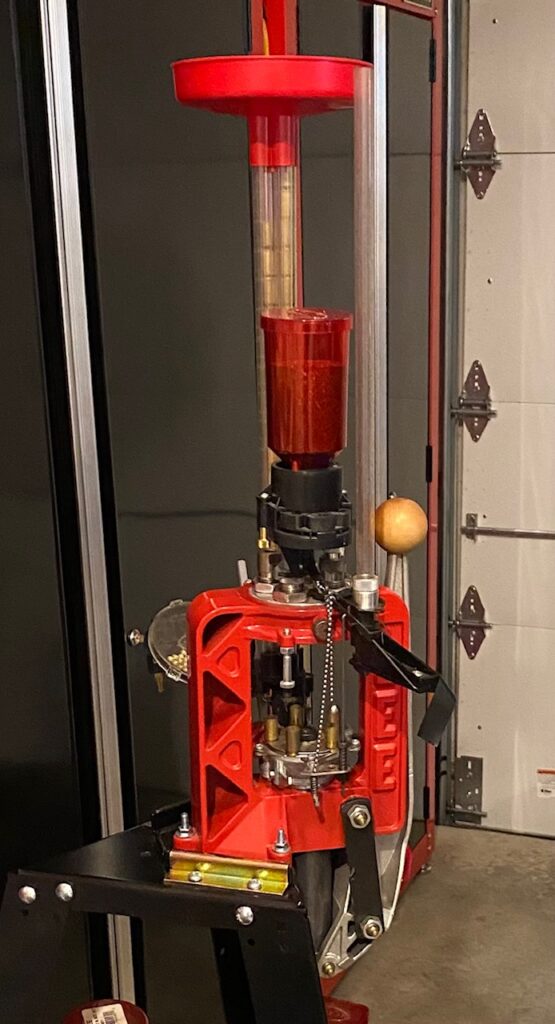How to start reloading ammo
An introduction to reloading pistol caliber ammunition
In this article I am going to cover the very basics of beginning reloading. It is going to be focused on reloading pistol caliber ammunition. My experience is primarily with 45 ACP, 40 SW and 9 mm.
The information in this article is for informational purposes only. If you decide to reload ammunition, you do so at your own risk. I would highly recommend one of the following books on the subject to be sure you have all the information you need to do it properly and safely.
“How to Reload Ammo” does not need to be confusing
If you look online you will see a lot of equipment, gadgets, chemicals and tools that you can purchase for reloading ammunition. As I found out when I first started to investigate, it can be quite confusing. My goal in this article is to clear up some of the confusing things you will run across and try to make it as basic and straightforward as possible through my experience.
___________________________________________
Here is the CALIBER DEBATE VIDEO:
____________________________________________
What is reloading?
At the most basic level, Reloading is simply taking an empty brass casing, usually fired once or more, install a new bullet, primer, and powder charge. Then reassemble it into a live cartridge that you can shoot again.
A “cartridge” also known as a “round” is simply live ammunition consisting of a brass casing, a bullet, a primer and gun powder.

I want to Reload ammo, but where do I start?
I recommend starting by picking up a book on the subject of reloading so you can become familiar with all the terminology and processes. Here are two books that I used to learn everything I know about reloading:
Modern Reloading by Richard Lee
Then pick up a reloading kit from one of the major manufacturers of reloading equipment. These kits include all the tools and equipment you need and they are not terribly expensive. The kits cost between $170 and $250, and I have a couple recommendations in this article.
Along with the kit, you will also need a Lee Reloading Die Set for the caliber you are going to reload. For example, the 9mm die set will run about $55.
In addition to the equipment, you will need the components to make your ammunition. These are discussed below, but are brass casings, bullets, primers and gunpowder.
Reloading Equipment List
- Reloading press
- Die set for the caliber you are reloading
- Cleaning solution
- Powder measure
- Primer insertion tool (if using a single stage press, this may make this easier)
Optional, but helpful tools
- Electronic Scale. Makes powder measuring easier.
- Calipers. Useful to accurately measure your completed cartridges.
Complete Reloading Kits for Beginners
There are a few kits available that come complete with everything you need to start reloading. Geared toward beginners, I recommend the following starter kits:
LEE PRECISION Anniversary Challenger Kit II
I mostly like this kit because it is inexpensive and comes with all the equipment you need to actually start reloading, except for a Die Kit for the caliber you are reloading.
It is built around a high quality single stage press. This type of press perfect for the beginner, and if you upgrade later you will still have a great single stage press for all kinds of uses.
Lee Precision 4 HOLE TURRET PRESS DELUXE KIT
If you are mechanically inclined and want to start out with something considerably better, check out this kit. It features a Lee Turret Press and is only about $80 more than the single stage I mentioned above. It also comes with everything you need except a set of Dies for your caliber.
The upgraded Turret press will enable you to reload more rounds in a shorter period of time. Each time you put an empty case in the press, you can perform several steps in succession instead of just one step as with a single stage press.
Lee Precision Load-Master Progressive Press
If you are really good mechanical devices, you may be interested the Lee Load-Master Progressive Press. I donot recommend this for beginners that have no reloading experience, but if you like to tinker and figure things out, this may be for you!
This press comes complete WITH Die set for the caliber of your choice. If you are loading 9mm, choose the Lee Load-Master 9mm, if you are loading .45 ACP like I am, choose Lee Load-Master .45 ACP, etc. these excellent kits will cost between $310 and $340 on Amazon.
Types of Reloading Presses
There are several types of presses used to reload, generally known as Single Stage Presses, Turret Presses and Progressive Presses.
Single Stage press
The simplest and least expensive option is to do each process manually on a Lee Single Stage Press. This method will allow you to make quality reloaded ammunition, but it will take longer.
Basically, you will set up the press to do one process such as removing the primer. You will then take each brass casing one at a time place it in the press and remove the primer. After all the primers are removed you will then set up your press to do the next process, such as installing a new primer. Then you will take each brass casing one at a time and install the primer using the press and so on.
Using a single stage press may take more time but it is a great place to start as it will help you to become familiar with the process and how everything works. Do not worry about wasting money by starting with a single stage press and then quickly deciding you want to upgrade to a more sophisticated set up. You will still find many uses for your single stage press.
Turret Press
A Lee Turret Press will allow you to set up multiple processes on the same press so you can move very quickly from one step to the next. For example, you will set a brass casing into the press, and with the first stroke you will remove the old primer. When you take the next stroke, the press will automatically rotate to the next process and automatically insert the new primer, and so on.
The press in the picture has an auto-disk powder measure on it that dispenses a set amount of gun powder into each case.
A turret press will allow you to reload much quicker than a single stage press.
Progressive Press
A Lee Progressive Press would be the most sophisticated and expensive way to reload. This is my favorite way to reload my .45 ACP cartridges!
When properly set up this press will perform up to five functions with each stroke of the arm. This means that with every stroke of the arm you will create a new reloaded cartridge! This will allow you to create numerous reloaded rounds very quickly but does require quite a bit of set up first.
Once it is set up, you will basically creating one round with every stroke of the piston arm.
Basic Reloading Components List
Here are the “parts” of a cartridge you will need in order to reload pistol ammunition (.45 ACP, 9mm, .40 S&W, etc):
- Empty brass (new or used)
- Bullets
- Primers
- Gunpowder
Empty brass
The brass casing is the most expensive part of the cartridge. There are several ways to acquire empty brass.

You can purchase brand new empty brass just for reloading purposes but this will likely be the most expensive route. You can also buy brass that has been used once, usually called “once-fired” brass which is less expensive.
Or you can do what I do which is to collect brass from the shooting range or reuse brass from your own shooting. I do a fair amount of shooting and I usually use factory made cartridges as well as my reloads. I just make sure I pick up all of my empty brass so that I can use it several more times in my reloads.
Important Note: You CANNOT reload casings that are not made of brass. Some manufacturers use steel or aluminum casings and these metals are not going to work for reloading, so only collect your actual brass casings.
If you have not started reloading yet but think you will in the near future, here’s an idea. Start collecting brass every chance that you get whether it be from the shooting club, public range, or just picking up your own brass after you’re done shooting. This way, when you are ready to actually reload some ammunition, you will already have the most important components, ready to go!
The same brass casing can only be safely reloaded a few times. The Best practice is to try to keep track of how many times your brass has been fired. This may not be easy to do, especially if you acquire most of your brass from the shooting range. Personally, I do not worry about this too much. I just take the time to visually examine each casing as I reload it and throw any suspect casings away. Also, when I go to the range, I always shoot some factory ammo as well as my reloads, so i always have verified “once-fired” brass to work with.
Bullets
Bullets can be purchased for reloading purposes from many different manufacturers. The least expensive would be lead bullets, but you can spend more and get copper jacketed bullets or hollow points as well. I usually make my own lead bullets which keeps the cost way down, but it does require a considerable additional effort. See my article on How to cast your own lead bullets.

Primers
Primers are the small explosives that fit in the back of the brass that is struck by the firing pin and ignites the gunpowder within the cartridge. These must be purchased and they typically come in quantities of 100 or 1000. The last time I bought primers, they were between 3 and 4 cents per primer, or 1000 for $30-$40. I am pretty sure that here in 2021 the price is much higher.
Primers come in different sizes and types. There are Small Pistol Primers, Large Pistol Primers, Magnum Pistol Primers, Rifle Primers, etc. Be sure to get the proper primers for what you are reloading.

Gunpowder
This is the most critical component. Gun powder comes in all different types. You MUST use the correct powder for the caliber and bullet type you are going to use. If you are not careful here, you can end up with serious injuries and/or damage to your firearms.

Gun powder can be purchased at most local gun stores that carry reloading supplies, or online at Brownells.com. You will need to do a little research to be sure you get the right kind for the caliber and type of bullets you will be using. You can find this information in most reloading guides such as the Lee Reloading Book.
Reloading Equipment and Supplies you DO NOT Need!!
Here is a list of common products in the reloading world that you do not need. These are optional but definitely not necessary to successfully make you own ammo.All these item have a place, and you may decide to purchase them as you become experienced.
- Tumblers, including tumbler media or any produce with the word “tumbler” in it.
- Ultrasonic case cleaner, including ultrasonic cleaning solution
- Case lube (you may need this, but If using Lee Carbide dies as I do, you do not need this)
- Electronic powder dispensers
- Case Trimmers (not needed for handgun reloading, only for rifle)
Here are the steps you will need to perform in order to complete the reloading process.
This introductory article is not meant as a tutorial on reloading. My goal is to provide a high level introduction to the process. Future articles will discuss each step in detail.
- Prepare & Clean the brass casing, including removing the spent primer if reusing the brass.
- Insert a new primer into the brass casing
- Measure and pour gun powder into the brass casing
- Insert bullet
- Crimp the brass if needed
- Measure overall length and visual inspection
1. Prepare the brass casing
If you are using new brass or once-fired brass that you purchased, there may not be any prep at all. However, if you are using your own used brass, you will need to decap, clean and inspect each casing. This will be discussed in separate article.
Here is a video of the de-priming or decapping process to remove the spent primer:
2. Insert a new primer into the brass casing
Your brass will either have a spent primer in the primer pocket or the primer pocket will be empty. If there is still a spent primer in the primer pocket, this will have to be removed which is called decapping or depriming. This would be the case if you are using brass that you picked up at the range or if you purchased once- fired brass that has not been decapped already.
If you purchased new brass casings or once-fired brass with primer removed, you are ready to go.
3. Measure & Pour in the Gunpowder
The amount of gun powder is extremely critical to have correct. You will need to consult a reloading manual to verify exactly how much powder you need for your particular reloads. The amount of powder will vary depending on Caliber, type of bullet, type of powder, etc.
This step can be done manually with a powder measure scoop or bench mounted measuring device. It can also be done on a press using an automatic measuring device such as the Lee Pro Auto Disk Powder Measure which will automatically dispense a set amount of powder into each casing.
4. Insert the Bullet
This step is pretty straightforward. Using a press and the appropriate die, you will insert the bullet and the die, once properly adjusted, will seat the bullet at the correct height. This height found in the reloading data from your reloading manual and will be determined by caliber, bullet type, etc.
5. Crimp the brass if needed
This step simply gives the brass a slight “squeeze” to help keep the bullet secure in the brass casing until it is fired. Some
That’s it, you now have a reloaded cartridge ready to take to the range.
Reloading Basics Wrap-up
Hopefully this article has given you a good idea of what you need to begin reloading. It seems a bit daunting at first but is really a simple step-by-step process that will become easy once you get started.
If you have any questions or comments, please leave them in the comments section below and I will respond within a day or two! i would love to help you get started in this rewarding hobby!



